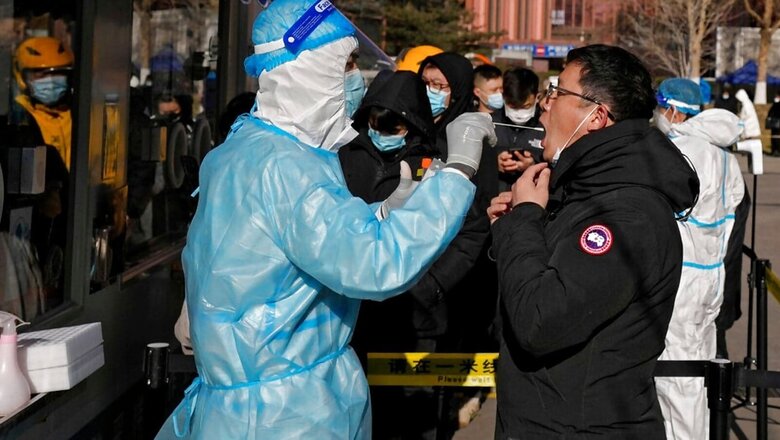
views
After Chinese researchers detected a new type of coronavirus ‘NeoCov’ among bats in South Africa, the World Health Organisation (WHO) on Friday said research on claims of high death and transmission rate needs further clarity. “Whether the virus detected in the study will pose a risk for humans will require further study,” the health body was quoted as saying to TASS news agency.
According to scientists from the Wuhan University and the Chinese Academy of Sciences’ Institute of Biophysics, NeoCov virus is associated with the Middle East Respiratory Syndrome coronavirus (MERS-CoV) outbreak in 2012 and 2015 and is similar to the SARS-CoV-2, which causes Coronavirus in humans.
While NeoCoV was discovered in a bat population in South Africa and has only been known to spread among these animals, a new study discovered that NeoCoV and its close relative PDF-2180-CoV can infect humans. “It is only one mutation away from becoming dangerous for humans,” researchers said in an unpeered study published as a preprint on the bioRxiv website.
However, according to the WHO, concerns regarding the possibility of the NeoCov Coronavirus posing a threat to humans requires further study. “Animals, particularly wild animals, are the source of more than 75 per cent of all emerging infectious diseases in humans, many of which are caused by novel viruses. Coronaviruses are often found in animals, including in bats which have been identified as a natural reservoir of many of these viruses,” the global body explained.
The WHO added that it “works closely” with the World Organisation for Animal Health (OIE), the Food and Agriculture Organisation (FAO) and the UN Environment Program (UNEP) in order to “monitor and respond to the threat of emerging zoonotic viruses.” The WHO told TASS that its experts were aware of this research, and “thank the researchers for sharing their findings in a preprint.”
The discovery by the Chinese researchers has raised eyebrows as the findings stated that the NeoCoV and its close relative PDF-2180-CoV can efficiently use some types of bat Angiotensin-converting enzyme 2 (ACE2) and, less favourably, human ACE2 for entry into cells. The study “demonstrates the first case of ACE2 usage in MERS-related viruses, shedding light on a potential bio-safety threat of the human emergence of an ACE2 using ‘MERS-CoV-2’ with both high fatality and transmission rate”.
This means NeoCoV carries the potential combination of MERS-high CoV’s mortality rate (one in every three infected person dies) and the current SARS-CoV-2 Coronavirus’s high transmission rate.
It was also found that the infection could not be cross-neutralised by antibodies targeting SARS-CoV-2 or MERS-CoV.
Meanwhile, Russian scientists that noted the discovery, shows that the variants of viruses capable of binding to human receptors without any adaptation are already circulating directly in the wild, TASS reported. Yet, it is difficult to assess its dangers, Head of the Biotechnology Laboratory of the Gamaleya Center Sergey Alkhovsky was quoted as saying.
“This is a rather serious, interesting discovery but it is very difficult to estimate the direct danger of this particular strain. We can state that there is a multitude of these strains circulating in the wild and we need to study this multitude, this genetic diversity and promote research in this area,” he said at the meeting of the Scientific Council of the Russian Academy of Sciences.
The report comes as the Covid-19 variant Omicron and continued rise in Delta cases trigger outbreaks in countries across the globe. Although terms like “delmicron” and “flurona” or “florona” have done the rounds amid the rise of the Omicron variant, experts have been at pains to dispel rumour-mongering around the pandemic. “Delmicron” was used to suggest a surge fuelled by the Delta and Omicron variants while “florona” referred to the discovery of flu and Covid-19 in a single patient, a situation that experts have anticipated.
The coronavirus has killed at least 5,625,889 people since the outbreak emerged in China in December 2019, according to an AFP tally compiled from official sources on Thursday.
(With inputs from agencies)
Read all the Latest News here




















Comments
0 comment